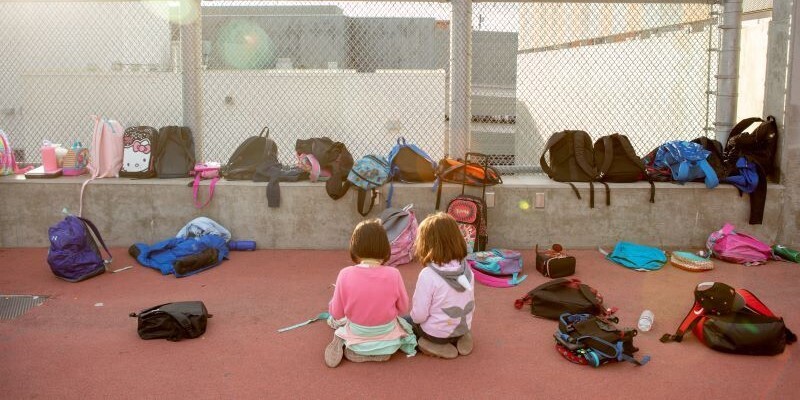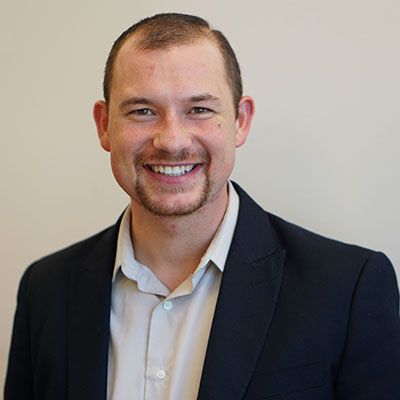COVID-19 poses unprecedented challenges for schools across the US as they kick off this new school year. Yet, if those of us involved in K–12 education can find a moment to catch a breath, it’s valuable to take fresh beginnings like these to remember why we do what we do.
At the Christensen Institute, the aim of our research in K–12 education is to “transform monolithic, factory-model systems into student-centered designs that enable each student to realize his or her fullest potential.” Considering the varied and pressing needs students and families face right now, student-centered learning seems needed now more than ever. Meanwhile, as COVID-19 has put so much of conventional schooling out of commission, now seems like as good an opportunity as any to figure out new ways to make learning more student-centered.
In this post, my aim is to step aside from the “how” of education under COVID-19 and focus for the moment on the “why” by sharing a story from my time as a teacher. My hope is that others will find inspiration here as they think about how to tackle the challenges ahead for this year.
Bright kids on broken paths
In my second year as a middle school math teacher I had a student in my class named Gerion. He was a nice kid who came to class eager to learn, and who dutifully followed my instructions. But his smile belied the fact that most of what I tried to teach him went right over his head.
Driving home from school at the end of the day, I often passed through Gerion’s neighborhood. Through my window I saw him bouncing between the houses on his street, sweet-talking neighbors to find a meal or a place to pass the time. The truth of the matter was, school was the least of his concerns. Amidst poverty, neglect, and homelessness, Gerion had racked up a long string of absences. Unfortunately, this meant he never picked up the foundational math skills he needed as precursors to my class. And as he continued to miss school on a regular basis, the situation wasn’t getting any better.
I believe that, with few exceptions, all students can reach high levels of academic achievement. But for far too many, academic success never becomes part of their reality. The problem in most cases is not a lack of innate ability. Rather, many students are not on a path that sets them up for success.
Some start school with limited vocabularies and lacking early exposure to letters and numbers. Others develop gaps in their understanding along the way due to absences or other personal circumstances that pull their attention away from school. Some don’t have the background support at home to help monitor their progress and intervene when learning road bumps crop up. Still, others may just develop their cognitive skills at a pace that deviates from the majority of their peers.
For one reason or another, the path to academic success breaks down for many students. As this happens, attitudes such as “I’m not a math person” or “school’s not my thing” become contagious. And when students’ sense of efficacy drops, so does their motivation and effort.
The deficits of our conventional model
The reason why students’ incoming skills, home life, or other personal roadblocks matter to their education is that the conventional age-graded classroom doesn’t adapt well to these differences. Its primary mode of delivery charges teachers with moving class cohorts through one-size-fits-all curricula at a set pace. The teacher is the source of all instruction and the one in charge of all student learning. It’s not a system designed to accommodate students’ unique needs and motivations.
In the midst of this system, many teachers make heroic efforts to help all their students succeed. They try to differentiate their lessons from one-size-fits-all to a-few-sizes-fit-more. They find ways to break up whole-class direct instruction with self-directed learning activities so they can give targeted instruction to small groups or individual students while their peers work independently. And they find time to work with students at lunch, at recess, before, and after school to help them fill their learning gaps. But in the end, there are only so many hours in a workday. And the majority of those hours are occupied with preparing and delivering whole-class instruction and taking care of school logistics.
I could have done more to help Gerion if I had been a more experienced and skilled teacher, or if had I put in more time for him outside my normal work hours. But in truth, I had many “Gerions” in my class that year—many students who were slipping through the cracks on the path to academic success because my whole-class instruction didn’t meet their needs. I don’t know that my singular best efforts could ever have made the difference for each of them.
Moving forward during a pandemic
Now, as schools and educators grapple with COVID-19, I hope many will respond to this moment by considering how to make learning more aligned with their students’ needs. For example, are there ways to shift some foundational instruction and feedback to online learning in order to prioritize check-ins, relationship building, and interactive learning when students and teachers are face-to-face? Might this be an opportunity to experiment with new instructional models that expand educators’ impact? Could the variations in students’ learning gains and losses over the summer be better addressed through mastery-based progression and individualized pathways and pacing?
Despite these trying times, I’m optimistic about the innovations that might come from the pandemic. Necessity may prove once again to be the mother of invention.


